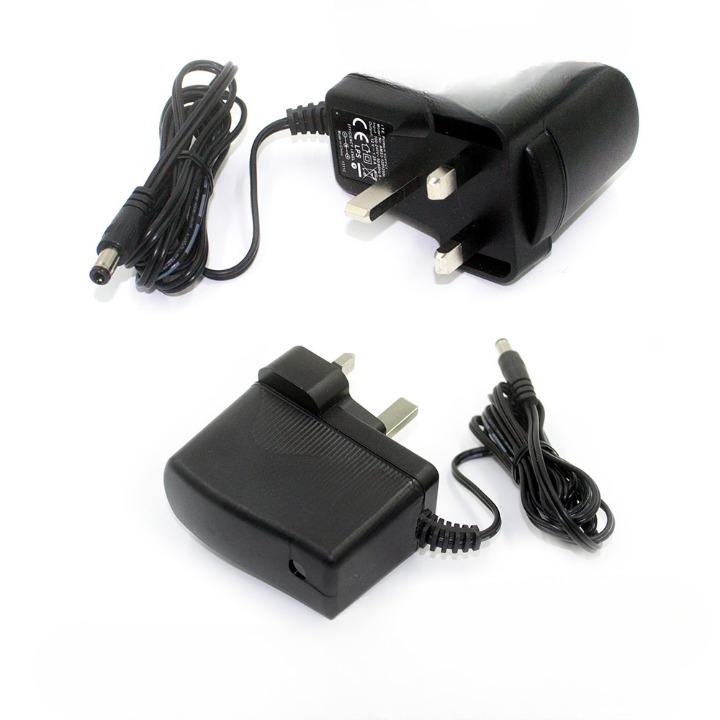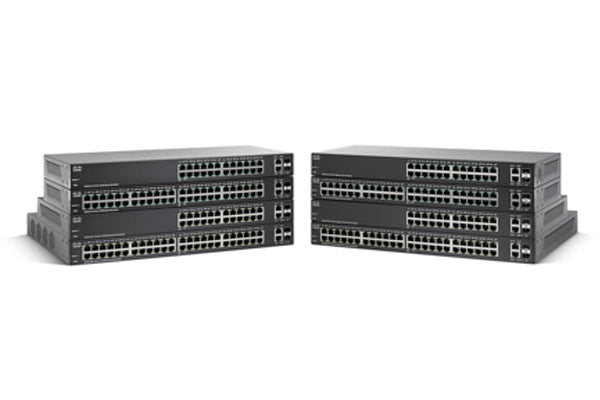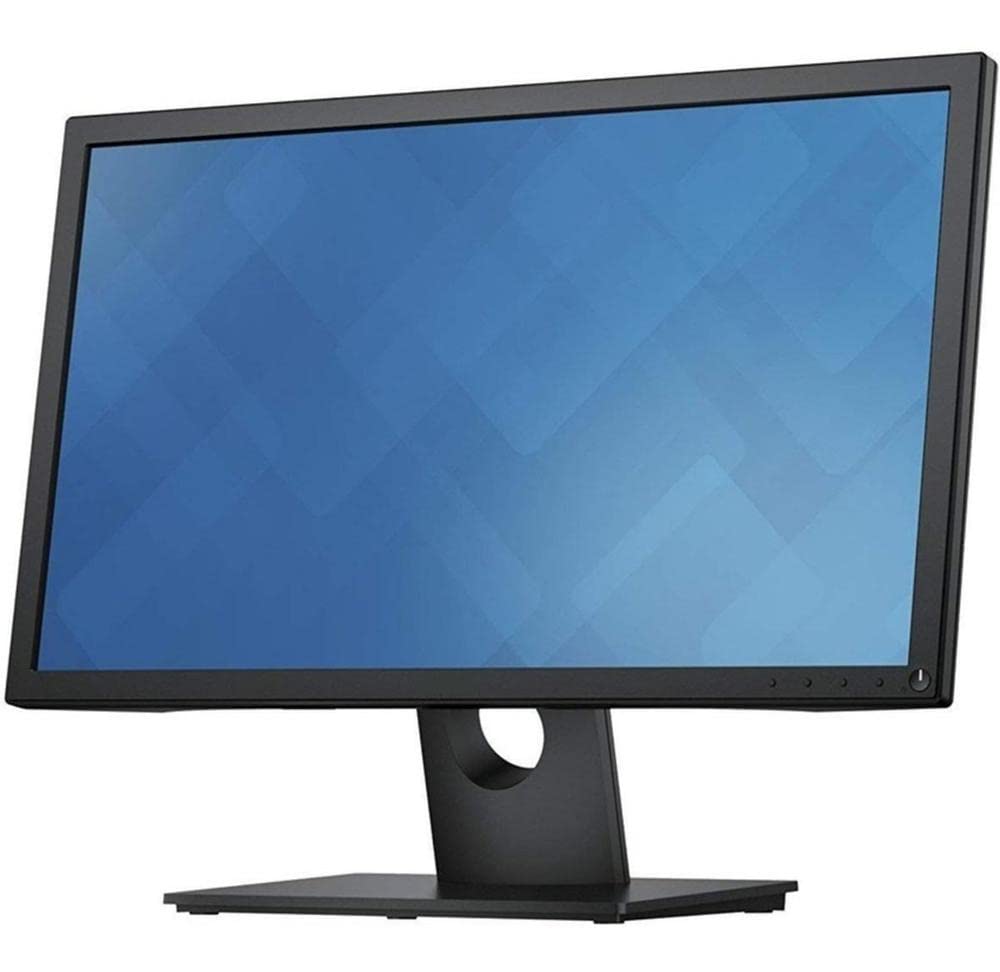You need to choose options for product.
CISCO
CISCO AIR-AP1815W-AK9-RF Aironet 1815w Series (not for US) Remanufactured
- Regular price
- $115
- Regular price
- $115
Category: Wireless Access Point
Condition: New
Incoterms: Ex-Works Singapore
Couldn't load pickup availability
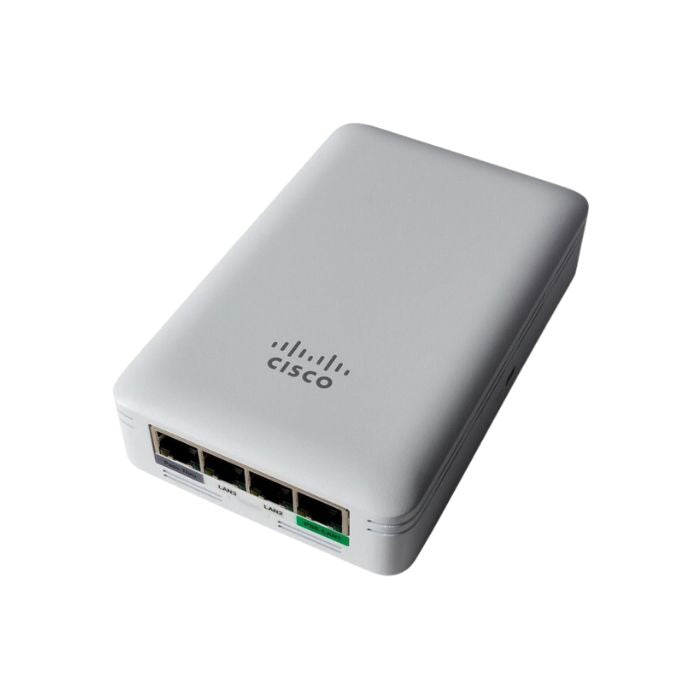

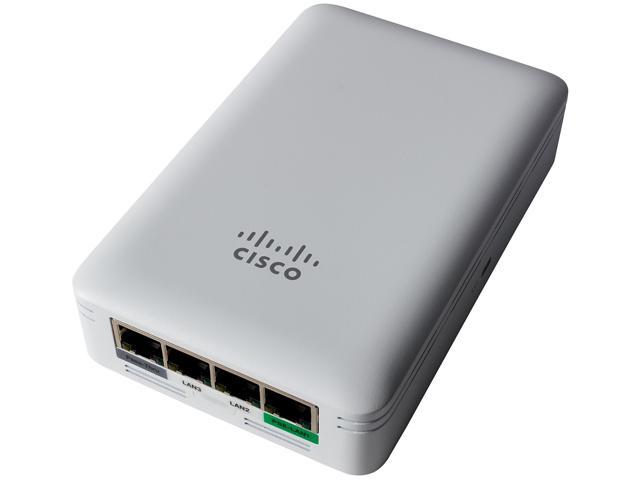
-
FREE TECH SUPPORT
With us, IT procurement becomes a seamless experience
-
EXCLUSIVE SERVICE
Register to get 24 hrs services
-
ORDER TRACKING
Don't know the progress of your order?
-
GROW WITH US
Become part of our vibrant community
Product Description
Condition: Cisco Certified Remanufactured (OEMREF)
Vendor Part Number: AIR-AP1815W-AK9-RF
AIR-AP1815W-AK9-RF is the Cisco Refresh equivalent of AIR-AP1815W-A-K9
Category: Wireless Access Point
Brand: CISCO
Description: Cisco Aironet 1815w Series (not for US) REMANUFACTURED
Dimensions:
| Weight | 0.8 (KG) |
| Height | 7.0 (CM) |
| Length | 22.0 (CM) |
| Width | 24.0 (CM) |
With a sleek design and small form factor, the Cisco Aironet 1815w Access Point brings a full slate of Cisco high-performance functionality to multiple-dwelling-unit deployments.
Product Overview
The Cisco® Aironet® 1815w Access Point (Figure 1) offers a compact, wall plate–mountable access point, ideal for hospitality, cruise ships, residential halls, or other multiple-dwelling-unit deployments.
Packing 802.11ac Wave 2 wireless support and Gigabit Ethernet wired connectivity into a sleek device, the 1815w is built to take full advantage of existing cabling infrastructure while blending into the visual footprint. This combination provides best-in-class performance while reducing total cost of ownership.
Features and Benefits
|
Feature |
Benefit |
|
MU-MIMO |
Multiuser (MU) Multiple-Input Multiple-Output (MU-MIMO) allows simultaneous data transmission to multiple 802.11ac Wave 2–capable clients to improve the client experience. Prior to MU-MIMO, 802.11n and 802.11ac Wave 1 access points could transmit data to only one client at a time. This was typically referred to as Single-User MIMO (SU-MIMO). |
|
Gigabit Ethernet ports |
Three local Gigabit Ethernet ports are available to securely connect wired devices to the network. Traffic from wired devices can be tunneled back to a wireless LAN controller (for compatible controllers) or be locally switched by the access point. One of these Ethernet ports can also provide Power over Ethernet (PoE) out to power a device such as an IP phone or a security camera. |
|
Cisco Mobility Express solution |
Flexible deployment through the Cisco Mobility Express solution is ideal for small to medium-sized deployments that require 50 or fewer access points. Easy setup allows the 1815w to be deployed on networks without a physical controller. |
|
Integrated Bluetooth 4.1 |
Integrated Bluetooth Low-Energy (BLE) 4.1 radio for location and asset tracking (future availability). |
Specifications
|
Item |
Specification |
||||||||||
|
Authentication and security |
● Advanced Encryption Standard (AES) for Wi-Fi Protected Access 3 (WPA3), WPA2, WPA
● 802.1X, RADIUS Authentication, Authorization and Accounting (AAA)
● 802.11r
● 802.11i
|
||||||||||
|
Software |
● Cisco Unified Wireless Network Software with AireOS Wireless Controllers Release 8.4.100.0/84 CCO or later
● Cisco Mobility Express
|
||||||||||
|
Supported WLAN controllers |
● Cisco 2500 Series Wireless Controllers, Cisco 3500 Series Wireless Controllers, Cisco Wireless Controller Module for ISR G2, Cisco Wireless Services Module 2 (WiSM2) for Catalyst ® 6500 Series Switches, Cisco 5500 Series Wireless Controllers, Cisco Flex ® 7500 Series Wireless Controllers, Cisco 8500 Series Wireless Controllers, Cisco Catalyst ® 9800 Series Wireless Controllers
● Cisco Mobility Express
|
||||||||||
|
Maximum clients |
● Maximum number of associated wireless clients: 200 per Wi-Fi radio, in total 400 clients per access point
|
||||||||||
|
802.11ac |
● 2x2 single-user/multiuser MIMO with two spatial streams
● Maximal Ratio Combining (MRC)
● 20-, 40-, and 80-MHz channels
● PHY data rates up to 866.7 Mbps (80 MHz on 5 GHz)
● Packet aggregation: A-MPDU (Tx/Rx), A-MSDU (Rx)
● 802.11 Dynamic Frequency Selection (DFS)
● Cyclic Shift Diversity (CSD) support
|
||||||||||
|
Ethernet ports |
● Authentication with 802.1X or MAC filtered
● Dynamic VLAN or per port
● Traffic locally switched or tunneled back to wireless LAN controller
|
||||||||||
|
Bluetooth (future availability) |
● Integrated Bluetooth 4.1 (including BLE) radio
● Maximum transmit power: 4 dBm
● Antenna gain: 2 dBi
|
||||||||||
|
Data rates supported |
802.11a: 6, 9, 12, 18, 24, 36, 48, 54 Mbps |
||||||||||
|
802.11b/g: 1, 2, 5.5, 6, 9, 11, 12, 18, 24, 36, 48, 54 Mbps |
|||||||||||
|
802.11n data rates on 2.4 GHz: |
|||||||||||
|
MCS Index1 |
GI2 = 800 ns |
GI = 400 ns |
|||||||||
|
20-MHz Rate (Mbps) |
20-MHz Rate (Mbps) |
||||||||||
|
0 |
6.5 |
7.2 |
|||||||||
|
|
1 |
13 |
14.4 |
||||||||
|
2 |
19.5 |
21.7 |
|||||||||
|
3 |
26 |
28.9 |
|||||||||
|
4 |
39 |
43.3 |
|||||||||
|
5 |
52 |
57.8 |
|||||||||
|
6 |
58.5 |
65 |
|||||||||
|
7 |
65 |
72.2 |
|||||||||
|
8 |
13 |
14.4 |
|||||||||
|
9 |
26 |
28.9 |
|||||||||
|
10 |
39 |
43.3 |
|||||||||
|
11 |
52 |
57.8 |
|||||||||
|
12 |
78 |
86.7 |
|||||||||
|
13 |
104 |
115.6 |
|||||||||
|
14 |
117 |
130 |
|||||||||
|
15 |
130 |
144.4 |
|||||||||
|
|
802.11ac data rates on 5 GHz: |
||||||||||
|
MCS Index |
Spatial Streams |
GI = 800 ns |
GI = 400 ns |
||||||||
|
|
|
20-MHz Rate (Mbps) |
40-MHz Rate (Mbps) |
80-MHz Rate (Mbps) |
20-MHz Rate (Mbps) |
40-MHz Rate (Mbps) |
80-MHz Rate (Mbps) |
||||
|
0 |
1 |
6.5 |
13.5 |
29.3 |
7.2 |
15 |
32.5 |
||||
|
1 |
1 |
13 |
27 |
58.5 |
14.4 |
30 |
65 |
||||
|
2 |
1 |
19.5 |
40.5 |
87.8 |
21.7 |
45 |
97.5 |
||||
|
3 |
1 |
26 |
54 |
117 |
28.9 |
60 |
130 |
||||
|
4 |
1 |
39 |
81 |
175.5 |
43.3 |
90 |
195 |
||||
|
5 |
1 |
52 |
108 |
234 |
57.8 |
120 |
260 |
||||
|
6 |
1 |
58.5 |
121.5 |
263.3 |
65 |
135 |
292.5 |
||||
|
7 |
1 |
65 |
135 |
292.5 |
72.2 |
150 |
325 |
||||
|
8 |
1 |
78 |
162 |
351 |
86.7 |
180 |
390 |
||||
|
9 |
1 |
– |
180 |
390 |
– |
200 |
433.3 |
||||
|
0 |
2 |
13 |
27 |
58.5 |
14.4 |
30 |
65 |
||||
|
1 |
2 |
26 |
54 |
117 |
28.9 |
60 |
130 |
||||
|
2 |
2 |
39 |
81 |
175.5 |
43.3 |
90 |
195 |
||||
|
3 |
2 |
52 |
108 |
234 |
57.8 |
120 |
260 |
||||
|
4 |
2 |
78 |
162 |
351 |
86.7 |
180 |
390 |
||||
|
5 |
2 |
104 |
216 |
468 |
115.6 |
240 |
520 |
||||
|
6 |
2 |
117 |
243 |
526.5 |
130 |
270 |
585 |
||||
|
7 |
2 |
130 |
270 |
585 |
144.4 |
300 |
650 |
||||
|
8 |
2 |
156 |
324 |
702 |
173.3 |
360 |
780 |
||||
|
9 |
2 |
– |
360 |
780 |
– |
400 |
866.7 |
||||
|
Maximum number of non-overlapping channels |
A (A regulatory domain):
● 2.412 to 2.462 GHz; 11 channels
● 5.180 to 5.320 GHz; 8 channels
● 5.500 to 5.700 GHz; 8 channels
(excludes 5.600 to 5.640 GHz)
● 5.745 to 5.825 GHz; 5 channels
B (B regulatory domain):
● 2.412 to 2.462 GHz; 11 channels
● 5.180 to 5.320 GHz; 8 channels
● 5.500 to 5.720 GHz; 12 channels
● 5.745 to 5.825 GHz; 5 channels
C (C regulatory domain):
● 2.412 to 2.472 GHz; 13 channels
● 5.745 to 5.825 GHz; 5 channels
D (D regulatory domain):
● 2.412 to 2.462 GHz; 11 channels
● 5.180 to 5.320 GHz; 8 channels
● 5.745 to 5.825 GHz; 5 channels
E (E regulatory domain):
● 2.412 to 2.472 GHz; 13 channels
● 5.180 to 5.320 GHz; 8 channels
● 5.500 to 5.700 GHz; 8 channels
(excludes 5.600 to 5.640 GHz) F (F regulatory domain):
● 2.412 to 2.472 GHz; 13 channels
● 5.250 to 5.350 GHz; 4 channels
● 5.725 to 5.825 GHz; 4 channels
G (G regulatory domain):
● 2.412 to 2.472 GHz; 13 channels
● 5.745 to 5.865 GHz; 7 channels
H (H regulatory domain):
● 2.412 to 2.472 GHz; 13 channels
● 5.180 to 5.320 GHz; 8 channels
● 5.745 to 5.825 GHz; 5 channels
I (I regulatory domain):
● 2.412 to 2.472 GHz; 13 channels
● 5.180 to 5.320 GHz; 8 channels
|
K (K regulatory domain):
● 2.412 to 2.472 GHz; 13 channels
● 5.180 to 5.320 GHz; 8 channels
● 5.500 to 5.620 GHz; 7 channels
● 5.745 to 5.805 GHz; 4 channels
N (N regulatory domain):
● 2.412 to 2.462 GHz; 11 channels
● 5.180 to 5.320 GHz; 8 channels
● 5.745 to 5.825 GHz; 5 channels
Q (Q regulatory domain):
● 2.412 to 2.472 GHz; 13 channels
● 5.180 to 5.320 GHz; 8 channels
● 5.500 to 5.700 GHz; 11 channels
R (R regulatory domain):
● 2.412 to 2.472 GHz; 13 channels
● 5.180 to 5.320 GHz; 8 channels
● 5.660 to 5.700 GHz; 3 channels
● 5.745 to 5.805 GHz; 4 channels
S (S regulatory domain):
● 2.412 to 2.472 GHz; 13 channels
● 5.180 to 5.320 GHz; 8 channels
● 5.500 to 5.700 GHz; 11 channels
● 5.745 to 5.825 GHz; 5 channels
T (T regulatory domain):
● 2.412 to 2.462 GHz; 11 channels
● 5.280 to 5.320 GHz; 3 channels
● 5.500 to 5.700 GHz; 11 channels
● (excludes 5.600 to 5.640 GHz)
● 5.745 to 5.825 GHz; 5 channels
Z (Z regulatory domain):
● 2.412 to 2.462 GHz; 11 channels
● 5.180 to 5.320 GHz; 8 channels
● 5.500 to 5.700 GHz; 8 channels
● (excludes 5.600 to 5.640 GHz)
● 5.745 to 5.825 GHz; 5 channels
|
|||||||||
|
Note: This varies by regulatory domain. Refer to the product documentation for specific details for each regulatory domain. |
|||||||||||
|
Available transmit power settings |
2.4 GHz 20 dBm (100 mW) 17 dBm (50 mW) 14 dBm (25 mW) 11 dBm (12.5 mW) 8 dBm (6.25 mW) 5 dBm (3.13 mW) 2 dBm (1.56 mW) -1 dBm (0.78 mW) |
5 GHz 20 dBm (100 mW) 17 dBm (50 mW) 14 dBm (25 mW) 11 dBm (12.5 mW) 8 dBm (6.25 mW) 5 dBm (3.13 mW) 2 dBm (1.56 mW) -1 dBm (0.78 mW) |
|||||||||
|
Note: The maximum power setting will vary by channel and according to individual country regulations. Refer to the product documentation for specific details. |
|||||||||||
|
Integrated antennas |
● 2.4 GHz, gain 2 dBi
● 5 GHz, gain 3 dBi
|
||||||||||
|
Interfaces |
● 1 x 10/100/1000BASE-T autosensing (RJ-45), Power over Ethernet (PoE)
● Management console port (4-pin connector)
● Three 10/100/1000BASE-T ports (local Ethernet ports), including one PoE out port:
◦ PoE out provides 802.3af (class 0) when access point is powered by 802.3at, or no output when powered by 802.3af
● One passive pass-through port RJ-45 (back to bottom)
|
||||||||||
|
Indicators |
● Status LED indicates boot loader status, association status, operating status, boot loader warnings, boot loader errors
|
||||||||||
|
Dimensions |
● Access point (without mounting bracket): 3.5 x 5.5 x 1.25 in (89 x 140 x 31.5 mm)
|
||||||||||
|
Weight |
● Access point without mounting bracket or any other accessories: 10 oz (280 g)
|
||||||||||
|
Environmental |
● Operating
◦ Temperature: 32° to 104°F (0° to 40°C) ◦ Humidity: 10% to 90% (non-condensing) ◦ Max. altitude: 9843 ft (3,000 m) @ 40°C
● Non-operating (storage and transportation)
◦ Temperature: -22° to 158°F (-30° to 70°C) ◦ Humidity: 10% to 90% (non-condensing) ◦ Max. altitude: 15,000 ft (4,500 m) @ 25°C |
||||||||||
|
System |
● 1 GB DRAM
● 256 MB flash
● 710 MHz quad-core
|
||||||||||
|
Powering options |
● 802.3af/at Ethernet switch
● Optional Cisco power injectors (AIR-PWRINJ5=, AIR-PWRINJ6=)
|
||||||||||
|
Power draw |
● 8.5W (maximum, without PoE out)
|
||||||||||
|
Physical security |
● Torx security screw, included with the access point
● Kensington lock slot to lock device to mounting bracket.
|
||||||||||
|
Mounting |
● Included with the access point: mounting bracket AIR-AP-BRACKET-W3
|
||||||||||
|
Accessories |
● Mounting bracket: AIR-AP-BRACKET-W3= (available as spare)
● Spacer kit: AIR-AP1815W-KIT= (sold separately), includes spacer and RJ-45 jumper cable
● Physical security kit: AIR-SEC-50= (sold separately), with 50 pcs. security screws used to secure the access point onto wall-mounting bracket, 20 pcs. RJ-45 caps and 2 pcs. unlock keys used to block physical access to Ethernet ports
|
||||||||||
|
Warranty |
Limited Lifetime Hardware Warranty |
||||||||||
|
Compliance |
● Safety:
◦ UL 60950-1 ◦ CAN/CSA-C22.2 No. 60950-1 ◦ UL 2043 ◦ IEC 60950-1 ◦ EN 60950-1
● Radio approvals:
◦ FCC Part 15.247, 15.407 ◦ RSS-247 (Canada) ◦ EN 300.328, EN 301.893 (Europe) ◦ ARIB-STD 66 (Japan) ◦ ARIB-STD T71 (Japan) ◦ EMI and susceptibility (Class B) ◦ FCC Part 15.107 and 15.109 ◦ ICES-003 (Canada) ◦ VCCI (Japan) ◦ EN 301.489-1 and -17 (Europe) ◦ EN 50385
● IEEE standards:
◦ IEEE 802.11a/b/g, 802.11n, 802.11h, 802.11d ◦ IEEE 802.11ac
● Security:
◦ 802.11i, WPA3, WPA2, WPA ◦ 802.1X ◦ AES
● Extensible Authentication Protocol (EAP) types:
◦ EAP-Transport Layer Security (TLS) ◦ EAP-Tunneled TLS (TTLS) or Microsoft Challenge Handshake Authentication Protocol Version 2 (MSCHAPv2) ◦ Protected EAP (PEAP) v0 or EAP-MSCHAPv2 ◦ EAP-Flexible Authentication via Secure Tunneling (FAST) ◦ PEAP v1 or EAP-Generic Token Card (GTC) ◦ EAP-Subscriber Identity Module (SIM)
● Multimedia:
◦ Wi-Fi Multimedia (WMM)
● Other:
◦ FCC Bulletin OET-65C ◦ RSS-102 |
||||||||||







